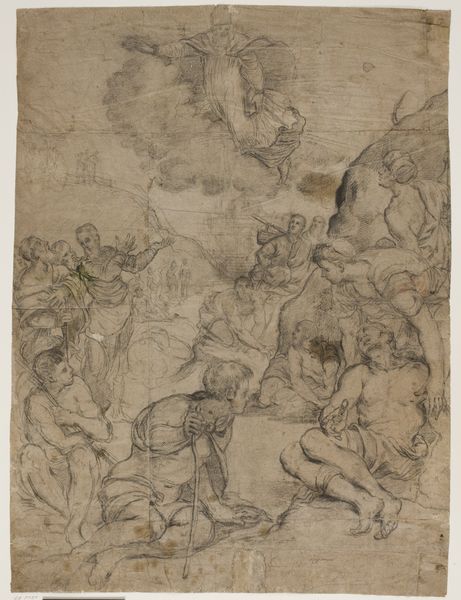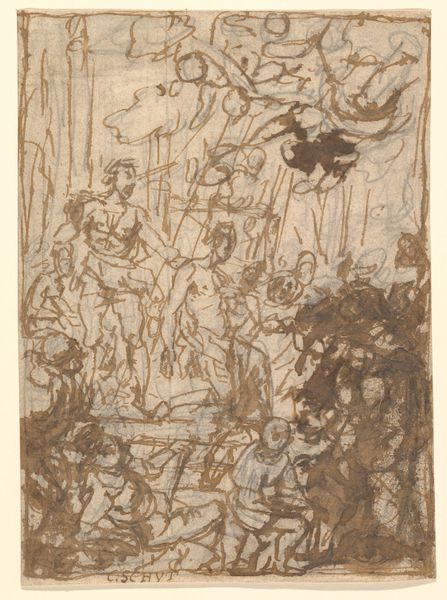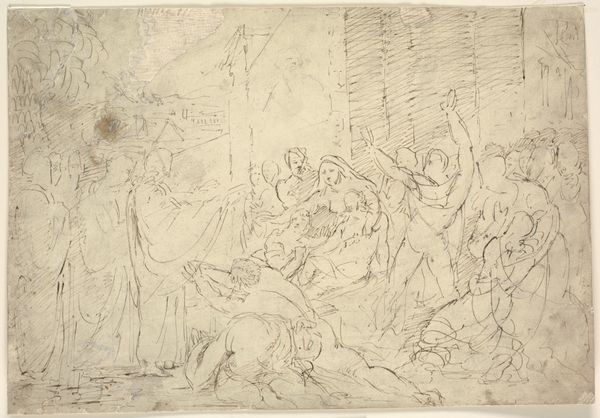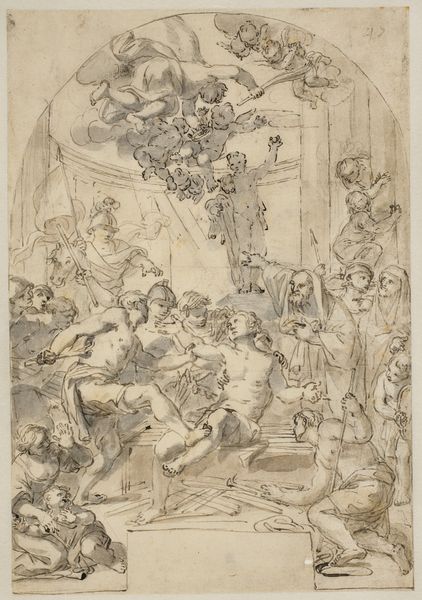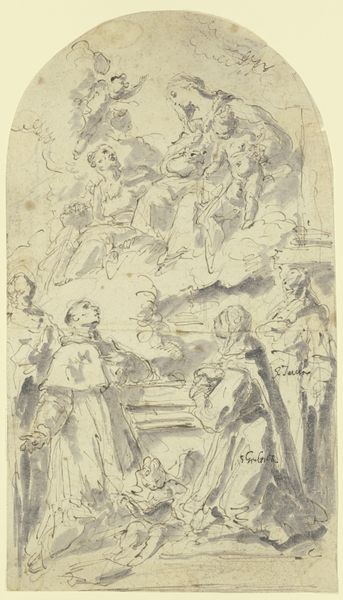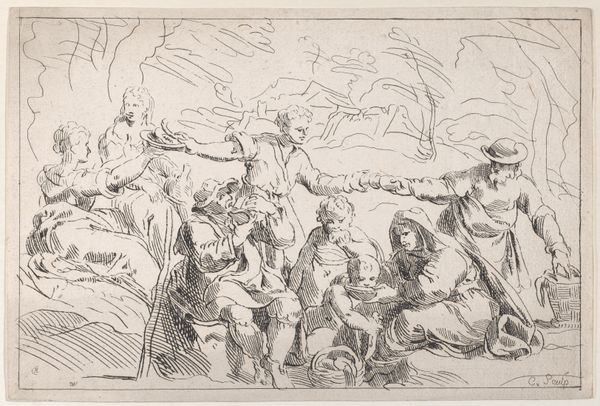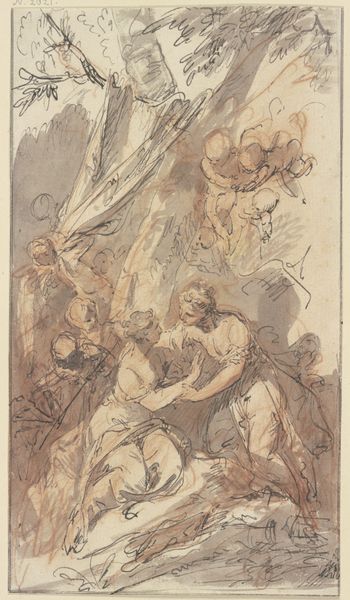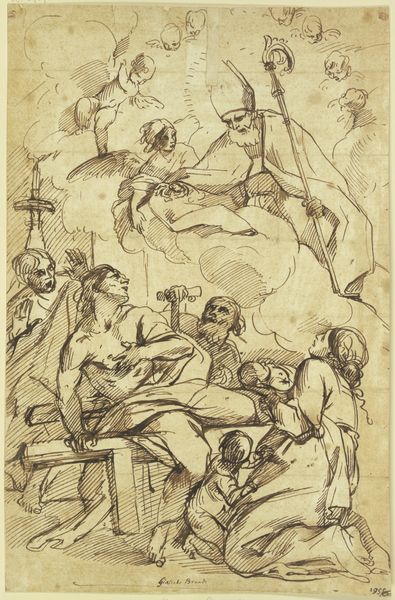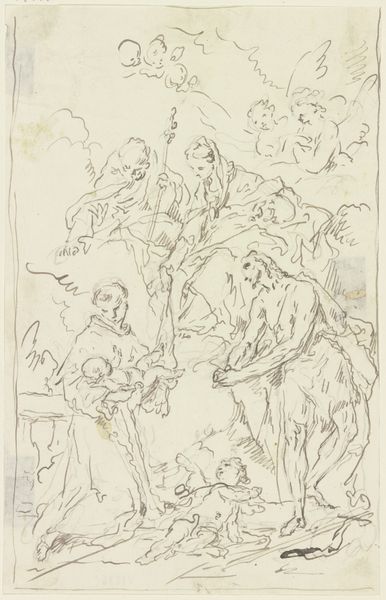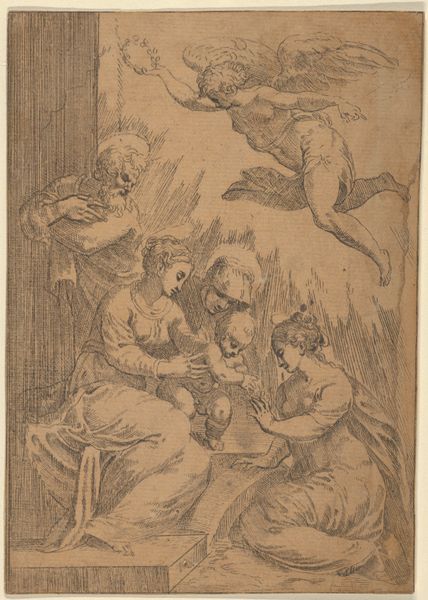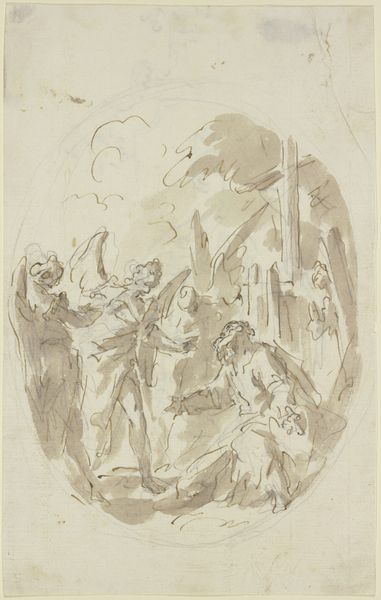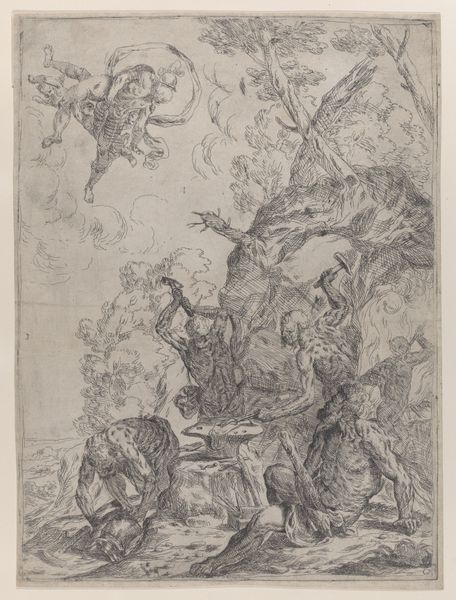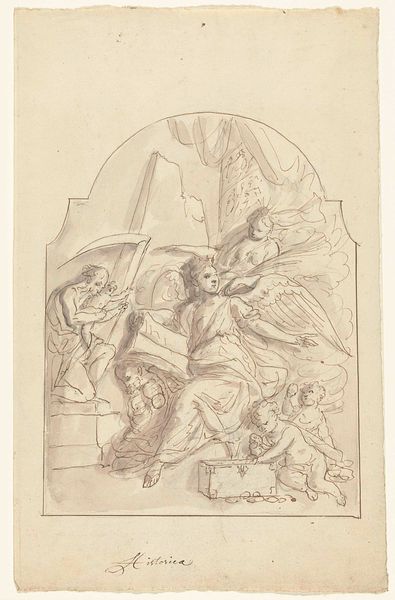
drawing, ink
#
drawing
#
baroque
#
ink painting
#
etching
#
figuration
#
ink
#
history-painting
#
watercolor
Copyright: Public Domain
Editor: So, this ink drawing by Johann Kaspar Sing, titled *Enthauptung eines Heiligen vor einer Götterstatue* depicts, well, a beheading. It's incredibly detailed and dramatic, even though the date of creation is unknown. What stands out to me is the central placement of the beheading itself, but there's this other world above with heavenly figures and then off to the side a large pagan idol, almost indifferent to the sacrifice taking place. What do you make of that? Curator: It's interesting that you immediately picked up on that spatial tension between the divine and the earthly, especially in a Baroque context. I see this drawing as an examination of power and the narratives that underpin it. Sing is staging not just a historical event, but also a cultural collision—a holy figure facing martyrdom, framed by both pagan idolatry and Christian iconography. It raises crucial questions. What did martyrdom mean in this period? Who controlled the narrative around these figures? Editor: So it’s more than just depicting a past event? Curator: Exactly. The Baroque period was rife with conflict, both religious and political. Sing is potentially asking us to consider the complexities of religious conversion, and to see the martyr not as a passive victim, but as an active participant in a power dynamic. Who benefits from this spectacle, the executioners, the observing crowd or the emerging religion itself? What does it say about the intersection of faith, power, and spectacle in shaping collective memory? Editor: I never thought about martyrdom as a spectacle with all those power dynamics you describe. I always considered the past a fixed entity that is immune from questions in the present day, so these critical frameworks open a whole new way to interact with art history. Curator: Indeed, viewing art through this lens encourages us to question established historical narratives and prompts us to consider the marginalized perspectives and forgotten stories. We must continually revisit how historical accounts are often formed. Editor: This discussion made me think about what is represented and, even more importantly, what is strategically omitted from history. Curator: Precisely.
Comments
No comments
Be the first to comment and join the conversation on the ultimate creative platform.
